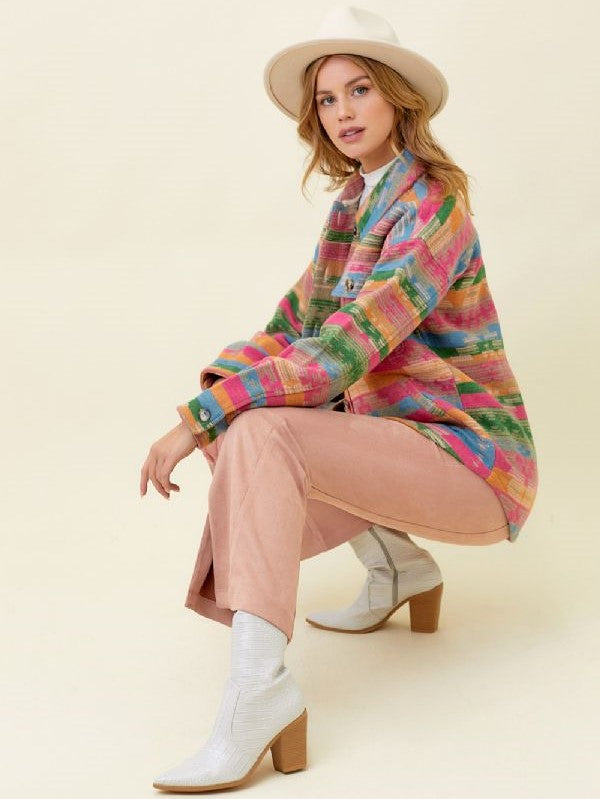Building a functional fall wardrobe doesn't require unlimited funds or a completely empty closet. What it does require is strategy. The difference between a closet full of clothes where you still have nothing to wear and a wardrobe that consistently works for you comes down to making intentional choices about what you bring in. Fall is actually the perfect time to refine your shopping approach because the season demands more from your wardrobe—layering, transitional pieces, and clothes that work across temperature fluctuations.
Start by identifying gaps rather than just buying whatever catches your eye. Look at what you already own and think about what's missing. Maybe you have plenty of tops but struggle to find bottoms that work with them. Or you have great statement pieces but lack the basics to build outfits around them. Washed Corduroy Trousers might be exactly what your wardrobe needs if you're drowning in jeans and leggings but have nothing that feels slightly more polished. One good pair of trousers can unlock multiple new outfit combinations from pieces you already own.
Prioritize versatility without sacrificing personality. This doesn't mean everything needs to be beige basics. A piece can be versatile while still having character. The Abstract Collared Ribbed Knit Top is a perfect example—the abstract pattern and unique collar make it interesting and distinctive, but the overall style is clean enough that it pairs with almost anything. These are the pieces that earn their space in your closet by working hard across multiple outfit combinations.
Pay attention to details that add value. Sometimes spending slightly more on a piece with thoughtful construction or special details is smarter than buying multiple cheaper pieces that don't excite you. A Looped Trim Knit Cardigan W/Button Front with that looped trim detail will always feel more special than a basic cardigan at the same price point. Those details are what make you reach for a piece repeatedly rather than letting it sit unworn in your closet.
Think about cost per wear rather than just sticker price. A dress might seem like a splurge, but if you wear it twice a week for an entire season, it's actually a smart investment. The Vintage Floral Zip Front Dress or the Embroidered Wash Shift Dress are both pieces you could easily wear multiple times per week in different styling combinations. When you break down the cost across all those wears, they're actually incredibly economical.
Don't underestimate the power of pieces that work across contexts. College life requires clothes that can transition from class to social situations to more formal events without requiring a complete outfit change. A Scallop Hem Puff Sleeve Top dressed down with jeans works for class, but the same top tucked into a skirt with nice shoes works for a date or dinner out. These multi-context pieces reduce the total number of items you need to own while increasing your outfit options.
Consider your actual lifestyle when shopping. It's easy to buy clothes for an imaginary version of your life rather than the one you actually live. If you're not regularly attending fancy events, don't dedicate a significant portion of your wardrobe budget to formal pieces. Instead, focus on clothes that match your daily routine. For most college students, that means pieces that are comfortable enough for all-day wear but still look put-together and intentional.
Quality indicators matter more than brand names. Look for details like finished seams, quality buttons, substantial fabric that isn't see-through, and construction that lies flat and smooth rather than puckering or twisting. A well-made piece from an affordable boutique will serve you better than a poorly constructed piece from a high-end brand. The Smocked Yoke Floral Puff Sleeve Top uses smocking for both style and function—it's a construction detail that adds shape and ensures a better fit.
Shop with a plan but stay open to unexpected finds. Having a list of what you need prevents impulse purchases of things you don't need, but being too rigid means you might pass on a perfect piece just because it wasn't on your list. If you find a Floral Puff Sleeve Mini Dress W/Tie Back that fits perfectly and makes you feel great, but you came in looking for jeans, it's okay to adjust your plan. The key is making sure any deviation from the list is genuinely filling a need in your wardrobe, not just satisfying a temporary shopping impulse.
Take care of what you buy so it lasts. This seems obvious, but properly caring for your clothes dramatically extends their lifespan and keeps them looking good. Follow washing instructions, store pieces properly, and address small issues like loose buttons or minor tears immediately before they become bigger problems. When you take care of your clothes, you get more wear out of them, which makes every purchase more economical in the long run.
Finally, shop less frequently but more thoughtfully. Instead of constantly adding random pieces to your wardrobe, take time between shopping trips to really wear and understand what you own. This helps you identify what's actually missing versus what you just think you need in the moment. When you do shop, you'll make better decisions because you have a clearer picture of what works in your existing wardrobe. Building a great fall wardrobe is a process, not a single shopping trip, and taking your time leads to better results.





